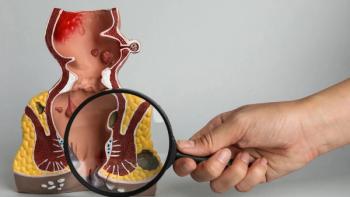
Emerging Treatments for Mantle Cell Lymphoma
BTK inhibitors and CAR-T cell therapies for mantle cell lymphoma help to expand the treatment landscape for patients.
Cancer care is constantly evolving, which means that newer therapies are making their way to market to help fight different types of the disease.
For more rare, aggressive cancers, such as mantle cell lymphoma (MCL), that are characterized by frequent relapse, this means potential life-saving treatment when standard of care no longer works.
“I would say that the treatment landscape of MCL is changing very dramatically because of the advent of a number of novel agents that are very effective in the relapsed/refractory setting in MCL… many new agents and approaches are being developed in this space,” Dr. Kieron Dunleavy, a professor of medicine and director of the Lymphoma Program at GW Cancer Center in Washington, DC, said in an interview.
These new medications include BTK inhibitors, such as Imbruvica (ibrutinib) and Calquence (acalabrutinib); BCL-2 inhibitors, such as Venclexta (venetoclax); and immunomodulatory drugs (IMiDs), such as Revlimid (lenalidomide).
Chimeric antigen receptor (CAR)-T cell therapy, an innovative treatment first approved by the Food and Drug Administration in August 2017 for people with certain blood cancers, may also change the MCL treatment landscape.
Currently, a phase 2 trial (ZUMA-2) is examining the CAR-T cell therapy Yescarta (axicabtagene ciloleucel) in patients with relapsed or refractory MCL. “At this point, we don't have long follow-up in patients who have been accrued,” said Dunleavy, who is also co-director of the Microbial Oncology Program. “(Those results should be) very interesting. Long-term follow-up is needed to assess the effectiveness of this strategy in MCL given the indolent course of the disease.”
Although CAR-T cell therapy offers much hope, it comes with the potential of major side effects, such as cytokine release syndrome (CRS) and neurological toxicity. CRS happens when there is a rapid release of cytokines into the blood from immune cells affected by the immunotherapy. In this case, CAR-T cell therapy. It can cause fever, nausea, headache, rash, and can be life-threatening. Neurological side effects include headache, confusion and delirium. “CAR T-cell therapy for MCL has not been widely used, so we need a lot more experience with this approach, assuming the results of the ZUMA-2 and other similar studies are promising,” Dunleavy said.
The standard approach to treating MCL varies by the age of the patient. For instance, more aggressive treatments are typically given to patients who are under age 65, Dunleavy explained, such as high-dose therapy and autologous stem cell transplantation. Older patients (65 and above) are given less aggressive procedures.
“Most people who are diagnosed with MCL are in their 60s and 70s and therefore, they are frequently not eligible for very aggressive approaches,” he said.
In other cases, some newly diagnosed patients will receive the “watch and wait” approach because they may not require such aggressive treatment upfront. “Novel agents are exciting in MCL as many classes of drugs have high efficacy in relapsed and refractory disease,” Dunleavy said. “An important question is what role these novel agents will have in the treatment of newly diagnosed patients.”
This article was adapted from an article that originally appeared on OncLive, titled “




